 Albert Váradi, Portrait de Pierre GusmanEtching, 1924
Albert Váradi, Portrait de Pierre GusmanEtching, 1924Albert Váradi was born in Nagyvárad in Transylvania on 16 October 1896; his birthplace, then in Hungary, is today known as Oradea and is now in Romania, so both Hungary and Romania may lay claim to him. Váradi started his studies at the Budapest Academy and then continued at the Budapest School of Decorative Art. Drawn to printmaking after five years concentrating on sculpture, Váradi went to Munich in 1920 (or late 1919) to learn the art of etching under Peter Halm. That he showed immediate promise in this new field is evidenced by the fact that his etchings for Boccaccio were published in an edition of 250 copies by Hesperos Verlag in 1921, and those for Heine in an edition of 350 copies by Paul Stangl Verlag the following year. My copies of the Heine etchings are, rather surprisingly, each individually hand-signed by Váradi, presumably for a friend.
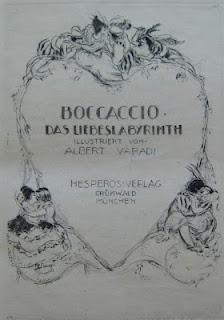 Albert Váradi, Title page for Das LiebeslabyrinthEtching, 1921
Albert Váradi, Title page for Das LiebeslabyrinthEtching, 1921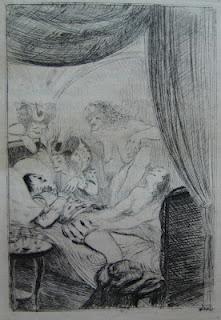 Albert Váradi, Etching for Das LiebeslabyrinthEtching, 1921
Albert Váradi, Etching for Das LiebeslabyrinthEtching, 1921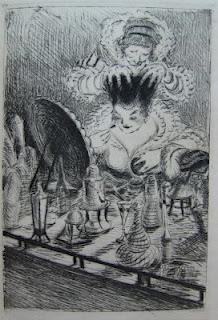 Albert Váradi, Etching for Das LiebeslabyrinthEtching, 1921
Albert Váradi, Etching for Das LiebeslabyrinthEtching, 1921 Albert Váradi, Etching for Das LiebeslabyrinthEtching, 1921
Albert Váradi, Etching for Das LiebeslabyrinthEtching, 1921In April 1923 Váradi moved to Paris, where he first exhibited in that year's Salon d'Automne. He produced etchings of Paris street scenes, beaches in Normandy, and portraits, which Loÿs Delteil thought his strongest work. Váradi did not make preparatory drawings, but drew directly onto the copperplate, like Paul Helleu and Marcellin Desboutin. Most of Albert Váradi's etchings were issued in tiny editions 10 or 30 copies, though two were more widely distributed: his portrait of Eugène Delâtre appeared in the Gazette des Beaux-Arts (c.1500 copies), and his portrait of Pierre Gusman was published in Byblis, Miroir des Arts du Livre et de l'Estampe (700 copies).
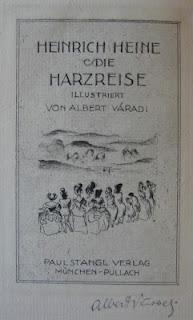 Albert Váradi, Title page for Die HarzreiseEtching, 1922
Albert Váradi, Title page for Die HarzreiseEtching, 1922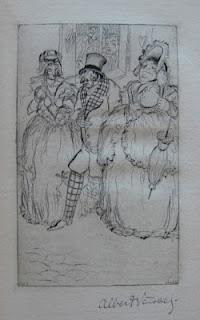 Albert Váradi, Etching for Die HarzreiseEtching, 1922
Albert Váradi, Etching for Die HarzreiseEtching, 1922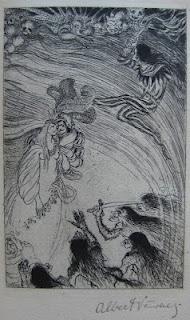 Albert Váradi, Etching for Die HarzreiseEtching, 1922
Albert Váradi, Etching for Die HarzreiseEtching, 1922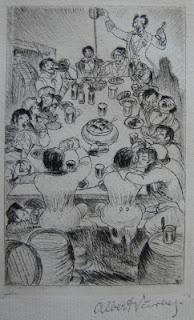 Albert Váradi, Etching for Die HarzreiseEtching, 1922
Albert Váradi, Etching for Die HarzreiseEtching, 1922Sadly, Albert Váradi died in Paris in 1925, his promising career cut short at the age of just 28, having only been etching for five years. What the final total of his etchings was, I do not know, but the total of individual works, even counting the etchings for Boccaccio and Heine, is almost certainly less than 100.

